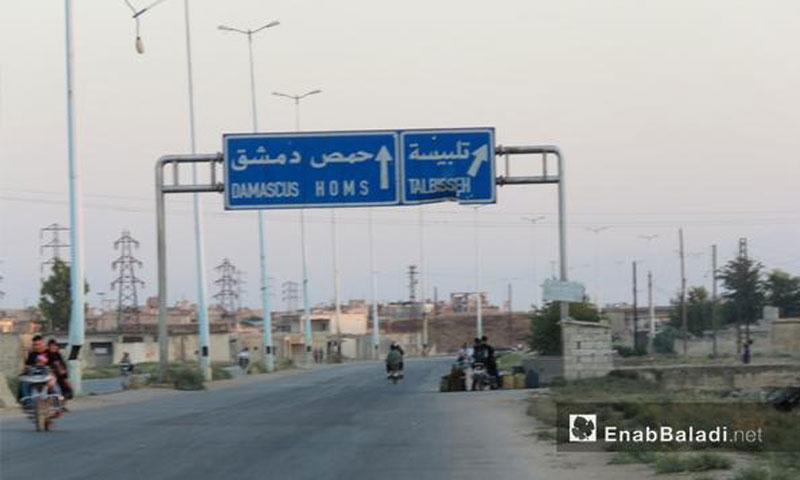



Homs – Orwa al-Mundhir
With the onset of winter, residents of the villages and towns of the northern countryside of Homs expect their homes to sink into darkness. Indeed, electrical transformers located in the area can barely feed two-thirds of the population following the return of many displaced people after Syrian regime forces took control of the area under a “reconciliation” agreement a year and a half ago.
The electrical transformers in the northern countryside of Homs have been seriously damaged in the past years due to the military operations that took place in the area.
Under the Syrian regime’s control, the government tended to repair these electrical transformers, but without installing larger ones that can feed all citizens’ homes with electricity. The power outages and the rationing policy imposed on the countryside of Homs, warns the population of more material burdens which they cannot afford, such as equipping the house with 12-volt LEDs for lighting. This also leads them think about other alternatives to electrical energy for cooking or heating.
Rationing and malfunctions
A source familiar with the work of the Electricity Corporation in the city of Rastan stated that, with the first rain showers last week in Homs, power supply was cut off from cities and towns in the northern countryside for more than four hours. At first, residents thought it was a simple malfunction, but it turned out that the malfunction was larger as an electrical transformer was broken because it was not prepared for the rain.
The source, who spoke to Enab Baladi on condition of anonymity for security reasons, added that the power plant in Rastan is suffering from a significant shortage of workers and technicians against the backdrop of many of its employees being fired during the last few years.
The source pointed out that the current transformers, mostly dated, and which are not commensurate with the volume of consumption of neighborhoods in the whole region, confirm that “serious breakdowns will occur during the winter.”
Regarding rationing, the source said that “it is inevitable, and we have started with two-hour blackouts for four hours of supply. Rationing hours will increase with the entry of winter.” He continued: “It is no secret the government is facing an energy crisis.”
Rising prices of LEDs and batteries
With the start of rationing and frequent electricity cuts, the residents of the northern countryside of Homs began to equip their homes with lighting using LEDs to manage their affairs during the winter. Enab Baladi noticed a significant rise in the prices of LEDs and batteries in shops.
Fadi, the owner of a shop selling electrical appliances, told Enab Baladi that winter is a season for batteries and LEDs, and naturally prices will increase as they are affected by the US dollar exchange rate as well. A battery suitable for home with a capacity of 20 ampere was until recently sold at a price of 32 USD, but now it is sold at 37 USD.
Meanwhile, a number of citizens of the Hula valley reported that they began to equip their homes with batteries for lighting, in anticipation of the long hours of interruption and the school children’s need for lighting, as well as their inability to live in darkness.
Electricity from the cement factory
The regime had cut off power to the Homs countryside when it was controlled by opposition forces. At the time, the cement factory in Rastan became an alternative source of electricity. Nearly 60% of the region’s population was provided with electricity, under conditions described as impossible and with a large network reaching most cities and towns, despite long distances.
Abu Khaled, one of the owners of the lines outside the factory during the control of the opposition, told Enab Baladi: “We were working in the harshest conditions, without equipment to help us.” He added that “despite the instability, the electricity remained constant and without rationing.”
The region returned to the Syrian regime’s control in July 2018, after a settlement agreement between the regime and the opposition, under Russian auspices, and the state institutions were expected to resume their activities. However, this has not been implemented fully so far.
if you think the article contain wrong information or you have additional details Send Correction